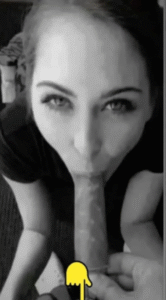🌍⚖️ GLOBAL ALERT: “Our Eyes May Lie” — The Fascinating World of Everyday Optical Illusions
In a world where seeing is believing, what happens when our eyes deceive us? Every day, millions of people encounter visual tricks—simple images that twist perception, distort shapes, and manipulate colors—without realizing they’re experiencing one of the most mysterious quirks of the human mind: optical illusions. They aren’t just parlor tricks or clever drawings; they reveal deep truths about how the brain works, how we interpret the world, and how fragile reality itself can seem.
Optical illusions have fascinated scientists, artists, and philosophers for centuries. They are the visual paradoxes that challenge what we think we know about truth and perception. Whether it’s the famous dress that divided the internet—blue and black or white and gold—or a simple sidewalk pattern that seems to move under your feet, illusions expose a profound reality: our brains don’t see the world objectively. Instead, they construct it, constantly making assumptions and filling in gaps to make sense of what our eyes observe.
🧠 The Science Behind Seeing and Believing
Vision begins in the eyes but is completed in the brain. Light enters through the cornea and hits the retina, where millions of photoreceptor cells convert it into electrical signals. But what we “see” is not a raw picture—it’s an interpretation. The brain processes these signals in fractions of a second, filtering, simplifying, and predicting what’s around us based on prior experience and context.
This shortcut helps us survive—it’s efficient and usually accurate—but it also makes us vulnerable to illusions. When information is ambiguous or incomplete, the brain guesses. Optical illusions exploit those guesses. A shadow, a pattern, or a contrasting color can trick the mind into seeing motion, depth, or color that isn’t really there.
🔍 Famous Examples That Still Baffle Us
- The Müller-Lyer Illusion:
Two lines of equal length are placed side by side. One has arrowheads pointing inward, the other outward. The line with outward arrows looks longer, even though they’re identical. Our brains interpret the arrows as depth cues, misjudging the length based on perspective. - The Checker Shadow Illusion:
Created by Edward Adelson, this illusion shows a checkerboard with a shadow cast across it. Two squares—one in the shadow, one outside—appear to be different shades of gray, yet they are the same color. Our brains compensate for lighting and shadow to maintain color constancy, revealing how perception adjusts automatically. - The Spinning Dancer:
A silhouette of a woman appears to spin clockwise or counterclockwise, depending on how the brain interprets her orientation. This illusion reveals hemispheric dominance in the brain—right-brained people often see it one way, left-brained another. - The Ames Room:
Step inside a distorted room where one person appears gigantic while another looks miniature. The slanted walls and tilted floor force your brain to assume the space is normal, creating a startling size distortion. This illusion demonstrates how context can override logic. - The Dress That Broke the Internet (2015):
Millions argued whether the viral dress photo showed blue and black or white and gold. The disagreement wasn’t about eyesight but perception—different people interpreted the lighting differently, showing how our brains adjust colors based on context and assumptions.
🎨 Illusion in Art and Architecture
Artists have long harnessed the power of illusion to evoke wonder. Renaissance painters like Leonardo da Vinci and Michelangelo used trompe-l’œil (“deceive the eye”) techniques to create depth and realism on flat surfaces. Later, surrealists like Salvador Dalí bent perspective to dreamlike extremes, while M.C. Escher’s impossible staircases—where water flows uphill and figures climb endlessly—continue to amaze mathematicians and psychologists alike.
In architecture, illusions guide how we experience space. Ancient Greek temples, like the Parthenon, were designed with slight curves and adjustments to counteract optical distortions—columns that appear straight and harmonious despite physical asymmetry. Modern designers, too, use perspective tricks in museums, public art, and even street murals that seem to pop out of the pavement.
🌈 The Hidden Power of Color and Contrast
Color illusions are among the most striking examples of how easily our vision can be fooled. The human eye doesn’t just detect light wavelengths—it interprets them relative to surrounding hues. This is why a gray square can look white against a dark background and black against a light one.
In everyday life, this illusion affects everything from fashion to design. Marketers use color psychology to influence emotions—red for urgency, blue for trust, green for calm—but they also use visual contrast to grab attention. Even food companies enhance colors to make products appear fresher or sweeter, knowing that perception shapes taste as much as reality.
⏳ Motion Illusions: When Still Images Move
Perhaps the most mesmerizing illusions are those that seem to move when they’re perfectly still. Patterns like the “rotating snakes” illusion use alternating colors and gradients to trigger tiny, involuntary eye movements (called microsaccades). The brain interprets these micro-motions as real movement. Though we know the image is static, it feels alive.
Motion illusions are also vital in neuroscience research. They help scientists study how the brain predicts movement—an ability critical for driving, sports, and survival. Even video compression algorithms mimic this trick, using predictive motion processing to save bandwidth.
💭 What Illusions Reveal About Human Nature
Optical illusions teach us more than just how we see—they show how we think. Every illusion is a reminder that perception is not passive; it’s an active construction. Our brains are storytellers, weaving narratives out of fragments, patterns, and assumptions. This tendency shapes not just vision but belief, memory, and emotion.
In psychology, this phenomenon extends to cognitive biases—mental illusions that distort judgment. Just as our eyes can be fooled by light and shadow, our minds can be misled by emotion and expectation. Recognizing visual illusions, then, is also a lesson in humility: what we perceive isn’t always the truth.
🌍 The Everyday Magic of a Deceptive World
From mirages shimmering on hot roads to depth illusions in virtual reality, the world around us constantly tests our senses. Technology has amplified these effects—3D films, augmented reality, and deepfake videos blur the line between truth and illusion more than ever. In this era of digital deception, understanding how perception works isn’t just fun—it’s vital.
Optical illusions remind us that reality is not simply “out there” but partly within us. They reveal the astonishing adaptability and fallibility of human perception. Every shadow, reflection, and trick of the light is a quiet reminder that our eyes may lie, but in doing so, they tell us something even more profound: the world we see is as much a creation of the mind as it is of matter.
In the end, optical illusions are not errors—they are evidence of a masterpiece.
They show how our brains transform chaos into clarity, fragments into form, and light into meaning. So the next time your eyes play a trick on you, don’t rush to correct them. Pause and marvel—because in that moment, you’re witnessing the mysterious artistry of perception itself.


